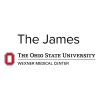
Urea Cream Treatment Sorafenib-Associated HSFR in HCC
Hepatocellular CarcinomaAlthough sorafenib is effective and safe in patients with advanced hepatocellular carcinoma (HCC), it increases dermatologic toxicities, including hand-foot skin reaction (HFSR), which may have a negative impact on patient quality of life (QoL). Urea-based creams may have a prophylactic effect on sorafenib-induced HFSR in HCC patients.

Pilot Study of Curcumin for Women With Obesity and High Risk for Breast Cancer
Atypical Ductal Breast HyperplasiaBRCA1 Gene Mutation3 moreThis randomized pilot clinical trial studies a nanoemulsion formulation of curcumin in reducing inflammatory changes in breast tissue in obese women at high risk for breast cancer. Curcumin may reduce inflammation in breast tissue and fat. This may affect the risk of developing breast cancer.

A Phase 3 Trial Comparing TACE and TARE in Unilobar Advanced Hepatocellular Carcinoma
Hepatocellular CarcinomaThe aim of this study is to compare the efficacy of conventional transarterial chemoembolization(TACE) and transarterial radioembolization in patients with unilobar advanced hepatocellular carcinoma.

Photodynamic Therapy With HPPH in Treating Patients With Squamous Cell Carcinoma of the Oral Cavity...
Recurrent Squamous Cell Carcinoma of the Lip and Oral CavityRecurrent Squamous Cell Carcinoma of the Oropharynx19 moreThis randomized phase II trial studies how well photodynamic therapy with HPPH works in treating patients with squamous cell carcinoma of the oral cavity. Photodynamic therapy uses HPPH that becomes active when it is exposed to a certain kind of light. When the drug is active, cancer cells are killed. This may be effective against squamous cell carcinoma of the oral cavity.

LDFWART With Docetaxel in Patients With Platinum-Resistant Recurrent Ovarian Carcinoma
Ovarian CancerOvarian Carcinoma2 moreThe ultimate clinical aim of this proposed phase I trial is to evaluate the toxicity and determine the recommended phase II dose of combining the effect of LDFWART following administration of docetaxel for 6 cycles in patients with recurrent platinum-resistant ovarian cancer.

A Study of PF-00299804 When Given Through a Feeding Tube in Locally Advanced Head and Neck Squamous...
Head and Neck Squamous Cell CarcinomaThis is a study to assess how much of the investigational drug, PF-00298804, is in the blood stream over a period of time (called pharmacokinetic tests or PK) in patients with locally advanced head and neck squamous cell carcinoma who have a (gastrojejunostomy) feeding tube.

Stereotactic Body Radiation Therapy in Liver Cancer That Cannot be Removed by Surgery or Transplant...
Adult Primary Hepatocellular CarcinomaAdvanced Adult Primary Liver Cancer2 moreRATIONALE: Radiation therapy uses high energy x-rays to kill tumor cells. Stereotactic body radiation therapy may be able to send x-rays directly to the tumor and cause less damage to normal tissue in patients with liver cancer. Giving stereotactic body radiation therapy may also increase patient eligibility for liver transplant.PURPOSE: This phase II trial is studying how well stereotactic body radiation therapy works in treating patients with liver cancer that cannot be removed by surgery or transplant.

Phase II Study of Cetuximab With or Without OSI-906 in Head and Neck Squamous Cell Carcinoma (HNSCC)...
Head and Neck CancerThe goal of this clinical research study is to learn if the addition of OSI-906 to cetuximab can improve response. The safety of these drugs will also be studied. Objectives: Primary Objective(s): To assess progression-free survival (PFS) among patients with head and neck squamous cell carcinoma (HNSCC) treated with a combination of cetuximab plus OSI-906 and compare it with PFS among patients treated with cetuximab plus placebo. Secondary Objective(s): To assess the safety and toxicity of these treatment regimens. To assess the efficacy of these two treatment regimens in terms of overall survival, response rate, and disease control rate To assess the efficacy of single agent OSI-906 following cetuximab treatment in terms of response rate and disease control rate in patients who cross-over from Arm B to receive single-agent OSI-906 To explore blood-based and tissue biomarkers

Decrease in Circulating Tumour Cell Count Reflects the Effectiveness of Postoperative Adjuvant Transarterial...
Circulating Tumor Cell;Hepatocellular CarcinomaCirculating tumour cell (CTC) count could reflect the effect of postoperative transarterial chemoembolization (TACE) on hepatocellular carcinoma (HCC) recurrence.

Warning Signs of Squamous Cell Carcinoma and Prevention of SCC by at Risk Organ Transplant Recipients...
Squamous Cell CarcinomaUsing focus group and cognitive interviews with organ transplant recipients, the investigators developed interactive workbooks: a) prevention by sun protection b) early detection by skin self-examination (SSE). The investigators hypothesis is if the patient learns by acquiring skills in a favorable environment, then the patient may reduce their anxiety, enhance self-efficacy and perform self-management by SSE and sun protection. The investigators also evaluate existing internet sources of primary and secondary prevention of skin cancer for organ transplant recipients.
